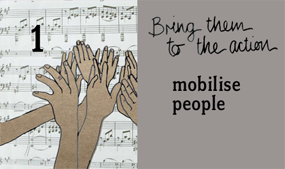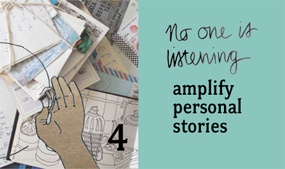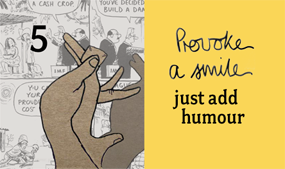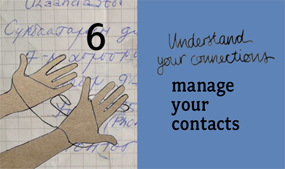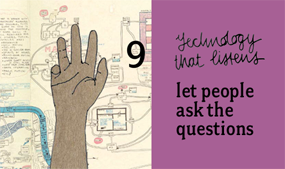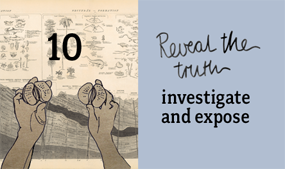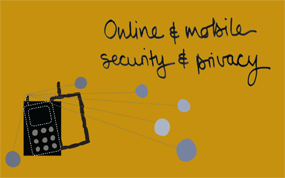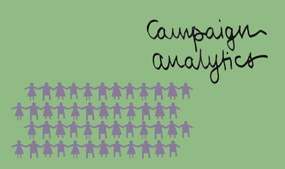THINK CREATIVELY
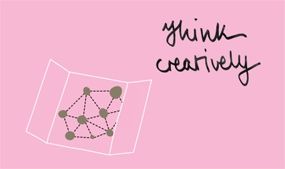 download this basic card (pdf 136kb) download this basic card (pdf 136kb)
EVEN WITH VERY FEW RESOURCES, YOU CAN TURN INFORMATION INTO ACTION – IF YOU ARE CREATIVE. THE ACTIVITIES INCLUDED IN THIS CARD WILL HELP YOU ENGAGE THE PARTICIPATION OF YOUR COLLEAGUES, SUPPORTERS AND PARTNERS IN A CREATIVE PROCESS TO DESIGN CAMPAIGNS THAT WILL INFORM, MOTIVATE AND INFLUENCE YOUR TARGET AUDIENCE.
This card covers four important aspects of creative campaigning:
- Inspiration: Looking at info-activism examples can be inspiring; it helps you come up with ideas.
- Innovation: To win over your target audiences, you need new ideas and/or new ways of expressing ideas.
- Perspective: To create campaigns that will motivate people to take action, you need to see things from their perspective.
- Ideas: Providing your group and colleagues with opportunities to brainstorm and test new ideas together will help identify those that will work.
INSPIRATION
Inspiration literally means 'to breathe into'. We have all experienced inspiration: when an outside influence makes us understand a situation differently or even do something we would not otherwise have done. By reflecting on the things that have inspired us to take action, we can understand how to inspire others.
Activity 1: IDENTIFYING INSPIRING CAMPAIGN ACTIONS
- Looking at existing campaigns is one way to find inspiration and develop your ideas. Each participant should present one campaign that changed the way they thought about an issue. This could be a website, a street protest, a video, a poster, an advertisement - any action that was part of a campaign advocating for change, and had information at its core. Participants mayor may not have access to documentation of this action, but this does not matter. They should each present to the group a simple hand-drawn diagram that shows:
- where they were when they first noticed the campaign action
- what the action did and what it achieved
- why it was creative
- how they were inspired by it
- Each person should present the campaign action they have chosen for 2-3 minutes, followed by one or two questions. If the participants have documentation (a copy of the advertisement, a photograph etc), they can show this to the group. During each presentation, listeners should write on sticky paper, in a few words, the tactic and format that were used for the action, and on another piece of sticky paper the audience it was designed to appeal to. Use the following definitions, to ensure everyone is referring to the same things:
|
Tactic: the approach you take to target a specific audience. Your tactic should appeal to that audience's tastes, habits, interests and value systems. Tactics may include humour to appeal to a young audience, group mobilisation to bring about a collective action, expressing complex data visually to get a message across clearly or broadcasting personal stories to bring home the impact of the problem.
Format: the medium or context of a campaign or action; for example: street theatre, comic strip, video documentary, radio programme, blog, social network site group.
Audience: the people you are trying to reach. This includes your target audience (the people who have the power to create the change you want to see) and your participant audience (the people who can help you influence your target audience).
|
- Place the sticky paper notes created in step 2 on a board or wall. Put all of the 'tactics/formats' sticky notes on the left side and the 'audiences' sticky notes on the right side. Try and match up which tactic/format would work best for which audience by drawing lines between the two sides. This will help you find tactics that will work for the audiences you want to reach.
INNOVATION
Innovation requires you to 'think outside the box' in order to do things successfully in a new way. This may seem daunting, but innovation could mean just using existing formats, tools and tactics in a new way. The following activity will help you to come up with innovative ideas related to your campaign. People should be encouraged to leave practical thinking behind for this activity; the aim is to think freely, without constraints or concerns as to whether the ideas will work in practice.
Activity 2:THINKING OUTSIDE THE BOX
- Ask participants to imagine that they represent abstract concepts, or operate in environments, related to your campaign. In the character of this different entity they should come up with ideas for your campaign. For example, if you are working on a climate change campaign, ask one person to assume the perspective of a polar bear or of an ocean. Another could imagine that they can fly. The idea is to come up with approaches that will help people see things from points of view that are outside their norms and preconceptions. Each person should then make a drawing or map of their new perspective on the issue and explain it to the group.
- People watching these presentations should note anything that inspires them to look differently at the campaign. If the group has found some creative momentum through this activity, they will discover innovative ways of thinking and acting.
PERSPECTIVE
Sometimes we think we know how people understand our campaign issue, but we haven't actually tried to see things from their perspective. If you have already worked through the 'Campaign Strategy' basics card, you will have identified potential target audiences, that you want to influence, and participant groups you want to motivate. Use that list for this exercise. If you haven't already made a list of target audiences and participant groups, do so now.
Activity 3: SEEING FROM THE PERSPECTIVE OF YOUR TARGET AUDIENCE AND PARTICIPANT GROUPS
- Give each person taking part in the exercise a photograph representing a target audience or participant community. Each photograph should have a simple descriptive title; for example, if you were working on climate change in India, you might include 'rural young person', 'wealthy elite family in capital city', 'environmental policy-maker', 'environmental NGO', 'school children' and 'polluting industry CEO'. The title can be general or specific, giving the names of politicians or organisations. Each person should come up with a short story, told in the first person, that explains the feelings of the person or group in their photograph about the campaign's issue.
- Give each person two minutes to tell their story to the group, earnestly and empathetically, in character. The others participants should ask them questions about why they feel the way they do, how they might be encouraged to support your campaign and the barriers that prevent them from getting involved.
IDEAS
To turn information into action, you need good ideas. When you have a lot of ideas, it's easier to choose those that will work best to achieve your objectives. The following activity will help you come up with ideas.
Activity 4: BRAINSTORMING AND TESTING OUT NEW IDEAS
- Divide participants into two groups, called 'exaggerate' and 'downplay'. Ask the first group to come up with positive, fantastic, naive, surreal ideas for a campaign message and ask the second to come up with subtle and pessimistic ones. Ask participants to illustrate their ideas visually in some way on a poster (this can be simple; drawing skills are not necessary) and to support them with a slogan. Put the posters on the wall and ask everyone to walk around and note (on sticky paper) anything that they think might be worth exploring for your campaign.
- Stick the notes on a board, in categories if possible (remove any duplicates), and try to rank them, discussing the most popular ones.
- Go back to your lists of tactics/formats and audiences from Activity 1, and discuss these along with the ideas that have emerged from this activity. Develop at least three campaign slogans, with visual elements, that you think have potential.
- Now split up and go out: each person or team should ask a few people how they would react to just two of your proposed campaign slogans. Depending on the audience you want to reach with your campaign, you may ask friends or their children, pay a visit to your grandparents, ask students or people of different professions. Different people have different reference points and knowledge, and you should explore this. How do they feel about these two messages? Do they like one more than the other? Why? What do they think about the campaign issue? Would they ever consider getting involved in the issue? Why or why not? The aim is not to recruit people to your cause but to understand how they feel about your campaign issue and potential slogans.
You should not take up more than a few minutes of anyone's time with these questions unless they are clearly willing. You may want to ask permission to record their responses on video, to share with your group. Otherwise, note the gender, age range and occupation of respondents, where you met them and what they said. Report their responses to the two messages back to the group.
|



